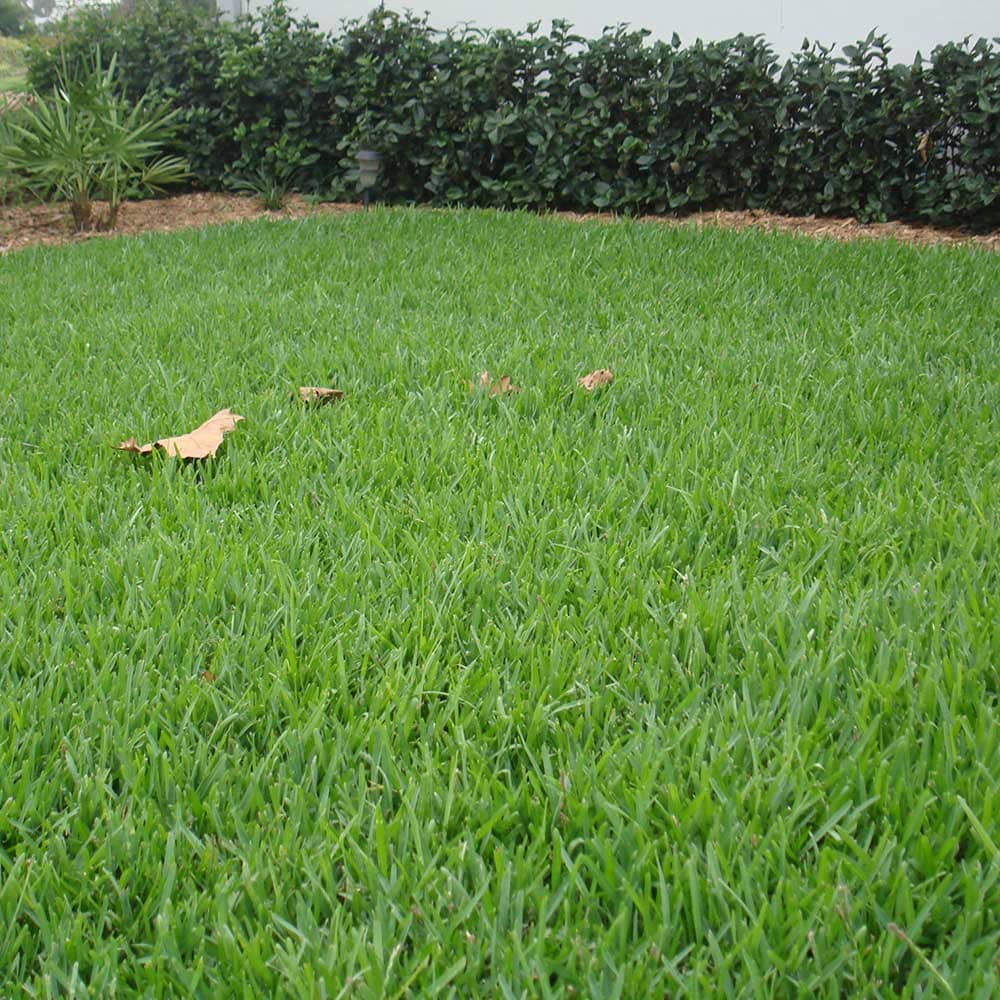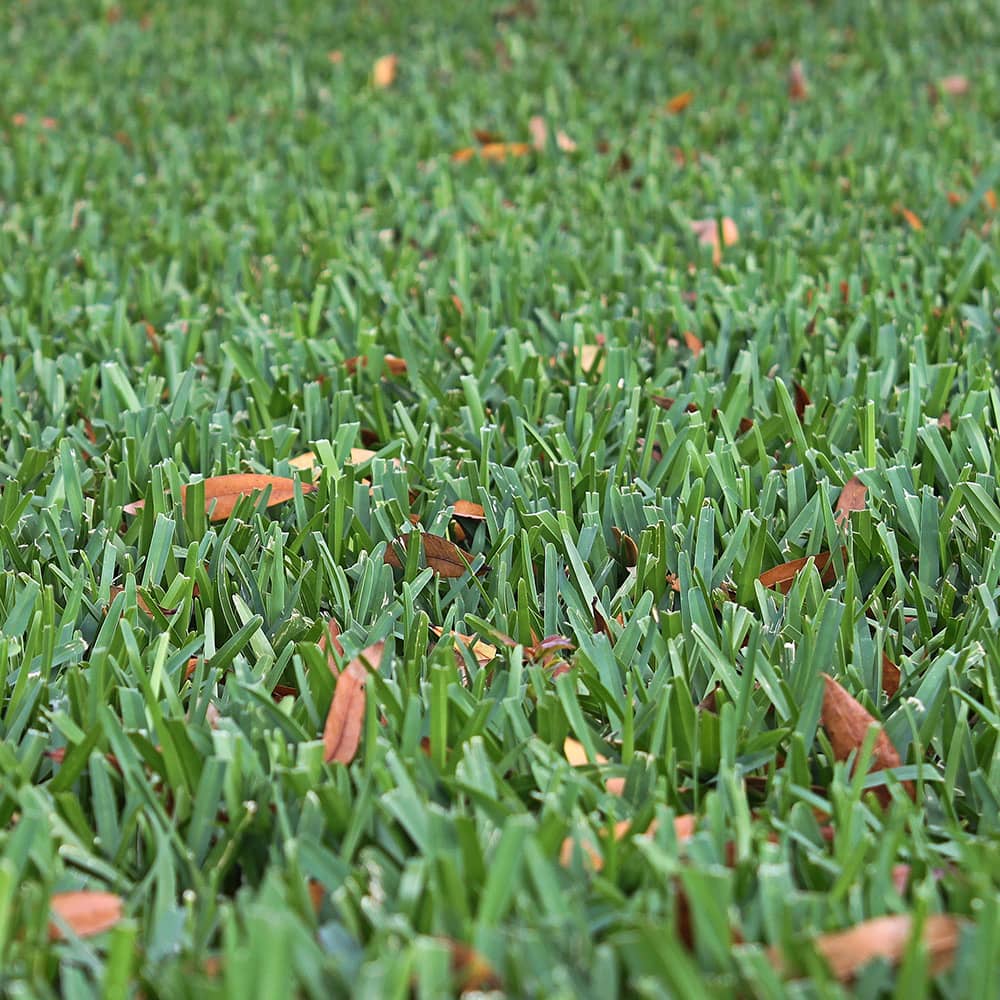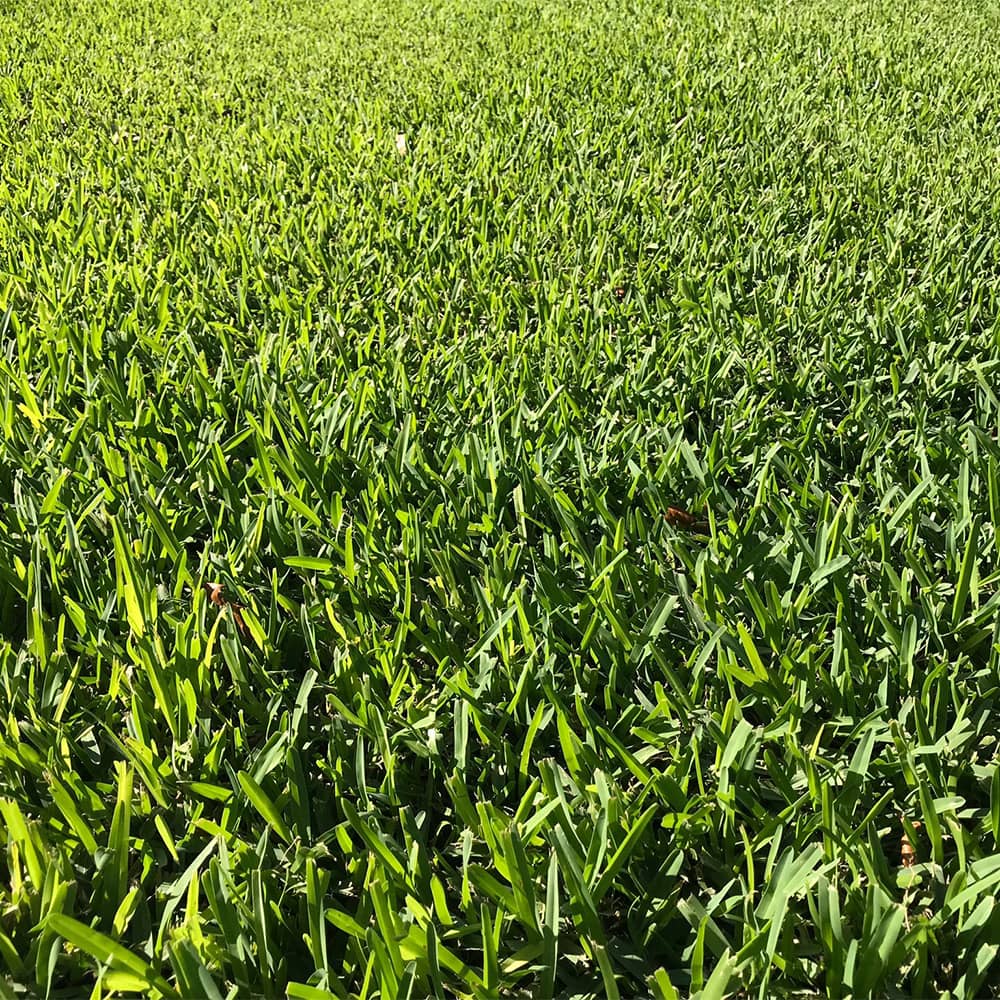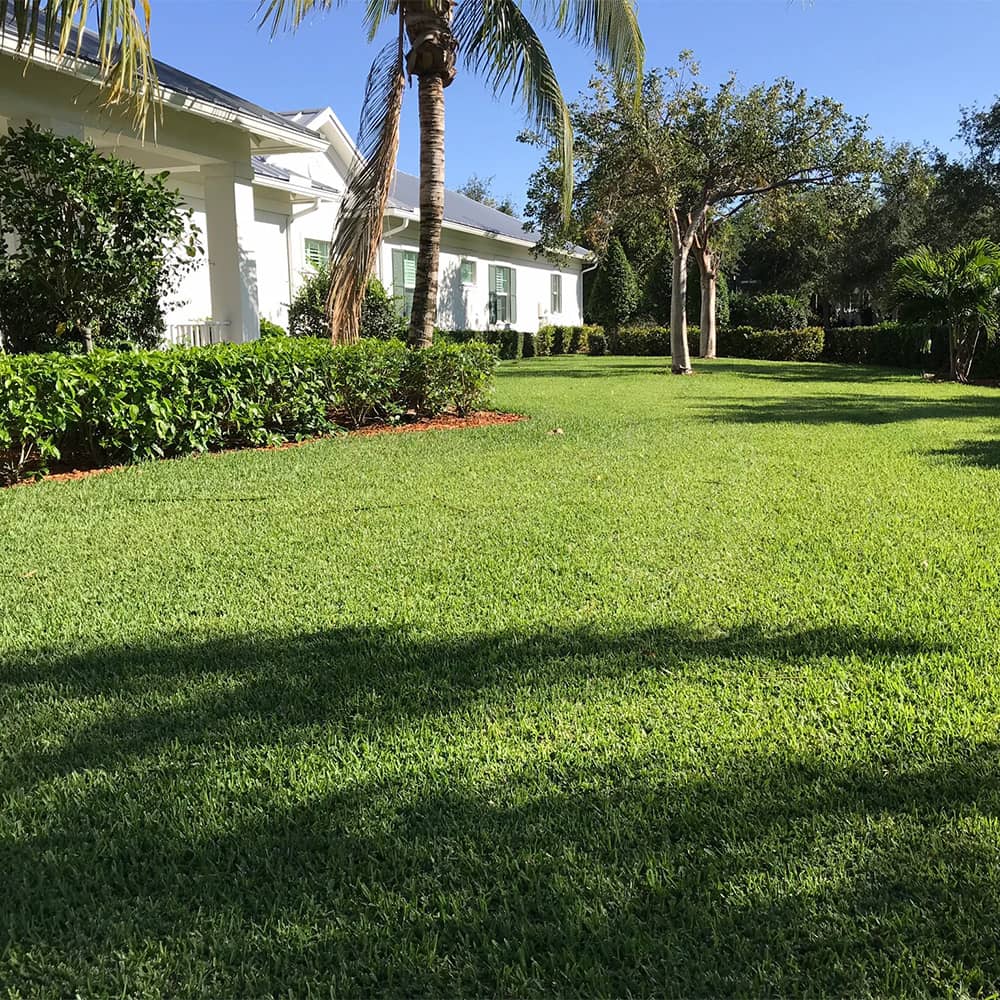St. Augustine is a turfgrass that is considered the most common and popular choice for many lawns in the country. It is a seasoned warm climate grass that thrives in shady areas. But, there are different varieties of St. Augustine grass– which defines the routine maintenance and care you need to follow.
So if you're planning to go with this grass on your lawn, let's discuss everything you need to know about the different types of St Augustine grass.
9 Common Varieties of St. Augustine Grass
Are you currently wondering, "What are the different types of St. Augustine grass?" Below are the most common varieties of this well-loved turfgrass.
Seville St. Augustine Grass


(Source: Sod Solutions)
Considered a dwarf version of the St. Augustine grass, the Seville St. Augustine grass variety has a more delicate texture than the other types. It takes on a blue-green color for the entire year. It is known to thrive well in the shade and even under drought conditions. So if you have a shady lawn, this is a solid choice to consider.
This St. Augustine grass variety complements a wide pH range of soil, allowing it to thrive in the coastal and inland areas. Since this grass only needs little water to survive, it's an ideal choice for homeowners who do not want to do too much maintenance or lawn care activities.
Palmetto St. Augustine Grass


(Source: Sod Solutions)
This next St. Augustine grass variety was first discovered in 1988– making it a relatively new type. It is a semi-dwarf turfgrass variety that has a plush appearance. Notably, it develops less thatch than the other varieties despite total exposure to the sun. It has a medium-width blade and rounded end that tapers, making it feel soft to walk on.
The Palmetto St. Augustine grass variety enters dormancy once it enters several simultaneous frosts. But, it stays green even in below-freezing temperatures (for one or two frosts). Its drought and shade resistance is second to Seville St. Augustine.
Expert Tip: To determine if the grass is about to be dormant, observe the tops of the blades as it will likely be tinged with brown.
Raleigh St. Augustine Grass
Developed in Raleigh, North Caroline, in the 1980s, the Raleigh St. Augustine grass variety can tolerate up to 10 degrees and takes on a pale, green color and coarse texture. Notably, this grass type is highly resistant to common lawn diseases. It thrives in heavy, clay soils with rich organic matter and medium to low pH levels.
While it can tolerate particular cold, drought, and shade– it can also turn yellow in no time and may have stunted growth in scorching environments. This can be paradoxical as the variety needs consistent exposure to the sun.
Floratam St. Augustine Grass


(Source: Sod Solutions)
Developed in 1972, the Floratam St. Augustine grass has an exciting background. It was designed to fight the St. Augustine Decline (SAD) grass virus that was plaguing Florida at the time. Today, this St. Augustine grass variety is known to grow well in various conditions. Long, thick blades characterize it. While the edges look coarse up close, it makes your lawn look healthy when viewed from afar.
It's why the Floratam St. Augustine grass is one of the most famous lawns in the country. Unlike its Seville and Palmetto cousins, this St. Augustine variety needs a generous amount of sun and frequent mowing every other week. Ideally, it would be best if you kept it at three inches in height to ensure optimal health.
Mercedes St. Augustine Grass
The Mercedes St. Augustine cultivar resembles the appearance of its Raleigh cousin. Notably, the roots grow through stolon in a rhizomatic way. This variety is considered tolerant to drought and shade conditions. It also accommodates moderate to high foot traffic. Many homeowners (and even commercial building owners) are big fans of this particular turfgrass variety, as it retains its beautiful bluish-green color even when the temperature starts to drop.
Important Note: It may be more susceptible to chinch bug infestation.
Sapphire St. Augustine Grass
The Sapphire St. Augustine grass variety is known to have the fastest lateral growth rate among all the available types. It also recuperates in no time– reviving blank spots and wearing faster.
It also grows well in subtropical climates as it is highly drought-tolerant. One important thing to remember is that the Sapphire variety of St. Augustine grass may be susceptible to some lawn diseases, such as brown fungus. You will have to re-sod your lawn annually– driving the costs higher.
Bitter-blue St. Augustine Grass
This particular St. Augustine grass variety has a rich blue-green color and is known to be more refined and denser. Though it has improved resistance to cold and drought, it is not as durable as its Seville and Palmetto cousins.
Evergreen St. Augustine Grass
This semi-dwarf variety of the St. Augustine grass stands out for its plush, dark-green color and narrow, short blade leaves.
It is considered one of the most shade-tolerant grass, but it can thrive well under direct sunlight. If you want turfgrass that has good color retention, the Evergreen variety turns green faster than the other types after the winter. It can also retain its beautiful color during the fall for the entire season. The downside includes being unable to tolerate very high foot traffic.
Delmar St. Augustine Grass
The Delmar St. Augustine grass's emerald green color and moderately coarse texture set it apart from the rest. Drought tolerance is moderate, while shade tolerance is fair. When it goes dormant in the winter, it turns golden brown. Nonetheless, it is the highest-ranking St. Augustine cultivar when it comes to cold tolerance. Once it has established roots, it will become low-maintenance.
It has average wear and disease resistance, yet it is an excellent choice for residential and commercial purposes.
Which St. Augustine Grass is Best for my Lawn?
Seville, Palmetto, Bitterblue, and Sapphire are the four cultivars of St. Augustine grass that make the list of the most excellent St. Augustine grass for shade. They are shade tolerant, but they may also grow in full sun (four to six hours a day compared to Floratam, which needs eight to ten hours a day).
However, cultivars that tolerate high levels of shade require special maintenance. It will compete with soil nutrients, water, oxygen, and other plants on the lawn. Tree branch trimming may also be needed. And the mowing height must be observed, along with limited foot traffic. (Related: 5 Tips on How to Keep your St. Augustine Grass Healthy and Fresh in Florida)
Frequently Asked Questions (FAQs)
What is St. Augustine grass?
Stenotaphrum secundatum is the botanical name for this grass. It's a robust, thick perennial grass that thrives in hotter climates but can tolerate shade. It grows well in well-draining soils and requires little salt to flourish. Because of its hardiness, a range of 8-10 generates coarse-textured blades with distinguishing deep green to blue, green hues. Many agronomists believe it is the most straightforward grass to care for because, unlike Bermuda and zoysia, it does not fall dormant right away in the winter.
What does St. Augustine grass look like?
To begin with, St. Augustine is not rhizomatic, unlike Bermuda. As previously stated, St. Augustine grass is distinguished by its deep green to blue-green color. The texture of its leaves is coarse. They have round tops and become more compact as they go down to the stalks. It grows on stolons and roots through the nodes. It's a shade-tolerant warm-season grass. It grows densely, so it is a popular turf and pasture grass.
Is St. Augustine a good grass?
It is a good grass for four reasons: (1) It is drought and shade tolerant, (2) most of its cultivars can thrive in the cold, with high color retention to last in the fall and return to full green quicker than others after the winter, (3) it is relatively low-maintenance once established, and (4) it is disease and wear-resistant.
What grass can I mix with St. Augustine?
St. Augustine can be mixed with only a few grass types to have a continuous dense turf that is tolerant to drought, shade, wear, and high foot traffic. Buffalo, Zoysia, and Bermuda grass (never hybrid types) would need seeding. It is not recommended to mix St. Augustine with other grass beside the ones mentioned because they can cause overseeding and may require higher maintenance.
